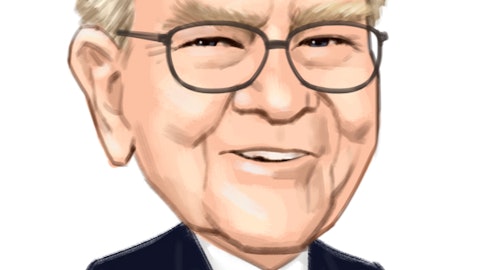3. Shopify Inc. (NYSE:SHOP)
Number of Hedge Fund Holders: 86
Shopify Inc. (NYSE:SHOP) provides a commerce platform and related services. It is one of the top ecommerce stocks on Wall Street. Among the hedge funds being tracked by Insider Monkey, Connecticut-based investment firm Lone Pine Capital is a leading shareholder in Shopify Inc. (NYSE:SHOP) with 1.3 million shares worth more than $1.9 billion.
On February 17, investment advisory Roth Capital downgraded Shopify Inc. (NYSE:SHOP) stock to Neutral from Buy, noting that international expansion plans would have a material impact on profits for the firm in 2022. Analyst Darren Aftahi issued the ratings update.
In its Q4 2020 investor letter, RGA Investment Advisors, an asset management firm, highlighted a few stocks and Shopify Inc. (NYSE:SHOP) was one of them. Here is what the fund said:
“While we are pleased with the results of these specific purchases, we made a huge mistake of omission at that time. This mistake will likely be one of the biggest we ever make in our careers. Specifically, we did deep work on Shopify Inc. (NYSE:SHOP) and loved everything about the business qualitatively. Unfortunately, we ultimately found ourselves unable to get comfortable with the numbers.
We built our model up from the key performance indicators (KPIs) that drive revenues. Our last save of the model dated 8/3/2016 looked as follows: (Page 2). These numbers seemed right from everything we understood about the company. While we tend not to rely on sell-side consensus estimates before finishing our own workup of the business, we do give them a look once we feel comfortable with how we have approached our analysis as it is often helpful to get a sense of what the average participant in the market expects the business to do. With Shopify, the sell-side consensus was so far from where our numbers were shaking out, it seemed almost impossible that we were basing our analysis on the same underlying information. Our natural next step was thus to take the sell-side consensus data and work backwards to figure out the implied expectations on each of the key revenue drivers. Here is what the sell-side consensus looked like as at the time: (Page 2).
Shopify’s actual revenues for 2016-2018 ended up being $389m, $673m and $1,073m. In other words, not only were we justifiably far more optimistic than the consensus estimate, but we also were far too conservative in terms of how the company actually performed.
The nature of our job as securities analysts is to take calculated risks, in an uncertain world where the “true” answer is inherently unknowable before the fact. We operate in what many call an “efficient market” and subscribe to the belief that for the most part, markets are generally pretty efficient and it requires differentiated analysis to find a return above what the market can offer. So why did we pass on Shopify Inc. (NYSE:SHOP) despite 1) deeply believing in the qualitative elements of the business; and, 2) seeing a meaningful gap between what we expected and the consensus expected? The answer is unfortunate but simple: we lacked confidence in ourselves. It was the first time we truly experienced such a stark divergence between our expectation and the consensus and the result was the inclination was to pound ourselves over the head with how dumb we must be, rather than the other way around. We also learned that the truly great companies use their strong business advantages, smart management and execution to raise the bar every step along the way. Obviously this is a cycle which cannot continue ad infinitum, but especially in instances where our qualitative work identifies the inherent strengths in the business and the numbers shake out to be quite fair, the consistent “raising of the bar” can be a potent driver for the stock.
Please do not judge us too harshly for our mistake on Shopify Inc. (NYSE:SHOP), for we have from the very beginning made one commitment above all else to both our clients and ourselves: that we will be better today than we were yesterday, and better tomorrow than we are today. While this mistake was quite costly, it ended up being a key confidence and process builder.”




